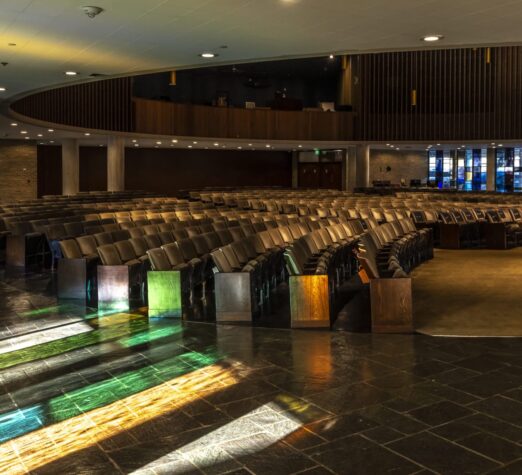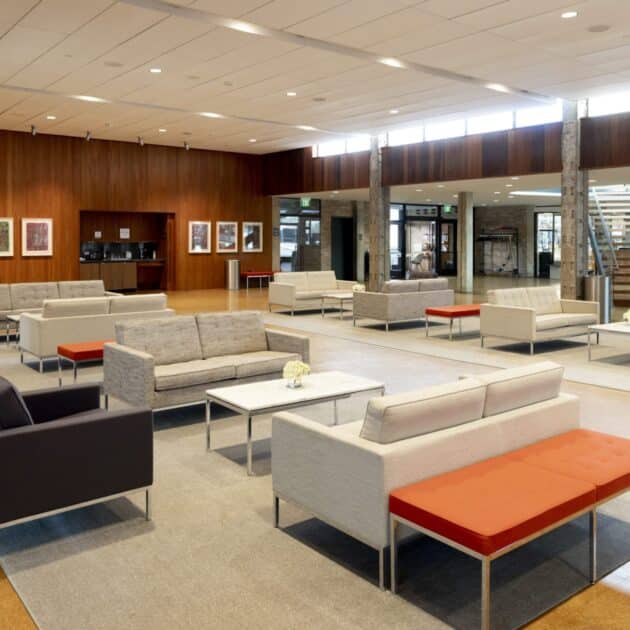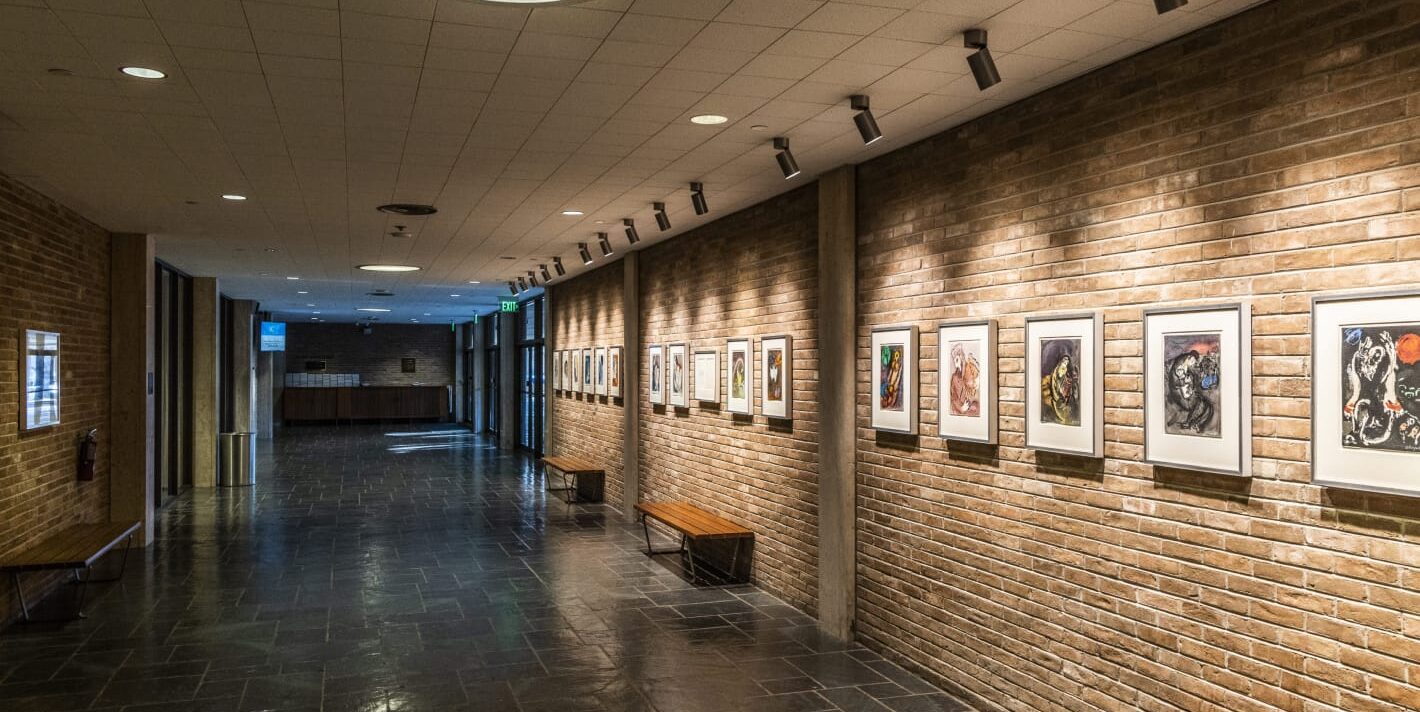History
Temple Emanu-El, the first Jewish congregation in North Texas, was founded in 1875. The temple evolved from the Hebrew Benevolent Association, organized in 1872 by 11 founders who established a cemetery and held the first Jewish services in Dallas. This initial gathering of pioneer Jews occurred just two weeks before the arrival of the first train—the indispensable catalyst for Dallas’ development into a bustling commercial center.
As more newcomers, drawn by the business opportunities engendered by the railroads, settled in Dallas, the rapidly expanding Jewish community recognized the need for a permanent religious structure. Accordingly, at Rosh Hashanah services in September, 1875, 51 people pledged their support to Congregation Emanu-El (God is with us). The members adopted a Reform prayer book and asked Dr. Isaac Meyer Wise, the leader of the American Jewish Reform movement, to recommend its first rabbi.


Temple Emanu-El erected its first house of worship in 1876 on Commerce Street in the heart of downtown Dallas. As the membership grew and the city expanded first south and then north, Temple Emanu-El relocated to Ervay Street in 1899, to South Boulevard in 1917, and to Hillcrest Road in 1957. Rabbis who have led the congregation had included Rabbi William Greenburg, Rabbi David Lefkowitz, Rabbi Levi Olan, and Rabbi Gerald J. Klein. Today the congregation of more than 2,500 families is currently led by Rabbi David E. Stern.
Through the years its members have kept faith with the pioneers who stated their religious obligation so simply and forcefully when they formed the Hebrew Benevolent Association in 1872, “It is a duty we owe our merciful God, our children and ourselves.”
More information about the history of Temple Emanu-El can be found in A Light in the Prairie, written by Temple’s retired archivist Gerry Cristol. Click here to purchase.
Architecture
Architects Howard R. Meyer and Max M. Sandfield, with noted California architect William W. Wurster as consultant, received a Twenty-Five Year Award of Merit from the American Institute of Architects for the original design of Temple Emanu-El, completed in 1957. The building, a midcentury design, has been called Meyer’s finest. Teak, tile, travertine, and Mexican brick were used on the temple, whose basic form is a cylinder for the sanctuary, surrounded by a rectangular structure that houses offices, meeting rooms, a chapel and a school. The Dallas Morning News late architecture critic David Dillon referred to Temple Emanu-El as “the finest architect/artist collaboration in the Southwest.”
In 2016, Temple Emanu-El completed a $37 million dollar expansion and renovation designed by Gary Cunningham of Cunningham Architects. The project included updating worship, education and communal spaces and adding Stern Chapel, Tycher Gathering Space, adult learning classrooms and a new wing to the Early Childhood Education Center. Stern Chapel, the crown of the expansion and renovation, features floor to ceiling windows that overlook the hundred-year-old live oak trees in the Nasher-Haemisegger Atrium. A theme of a connection between nature and sacred space can be seen throughout the new campus through open floor plans, windows and light. Read more about Stern Chapel from our May 2016 issue of The Window.

Art of Temple Emanu-El
Gyorgy Kepes of the Massachusetts Institute of Technology served as art coordinator for the original building in 1957, incorporating the work of local artisans John Szymak, Velma Dozier, Octavio Medellín, and Charles Williams, and international artists Anni Albers, Marc Chagall and Ben Shahn. Click here for a guide to the Art Collections of Temple Emanu-El.
